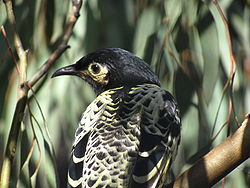
The Bundarra-Barraba Important Bird Area lies in the Northern Tablelands of north-eastern New South Wales, Australia. It is important for the conservation of the endangered regent honeyeater and is classified as an Important Bird Area (IBA) by BirdLife International.